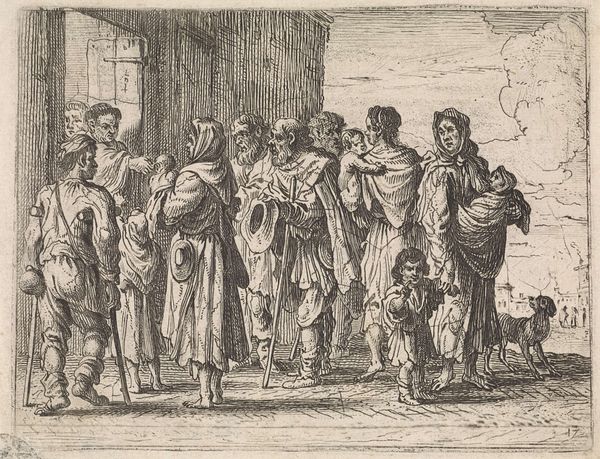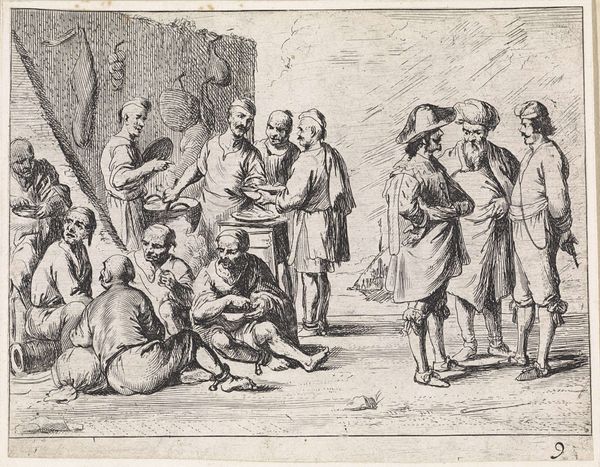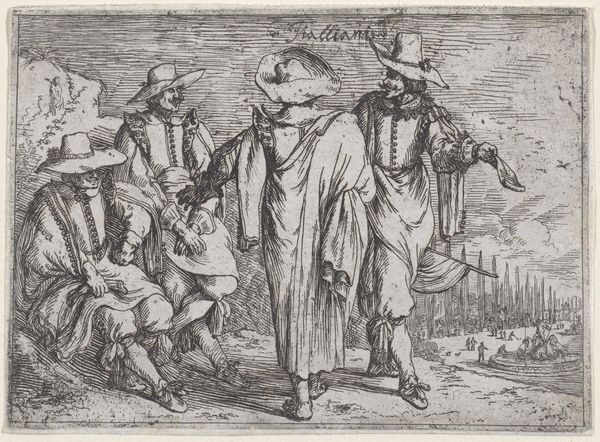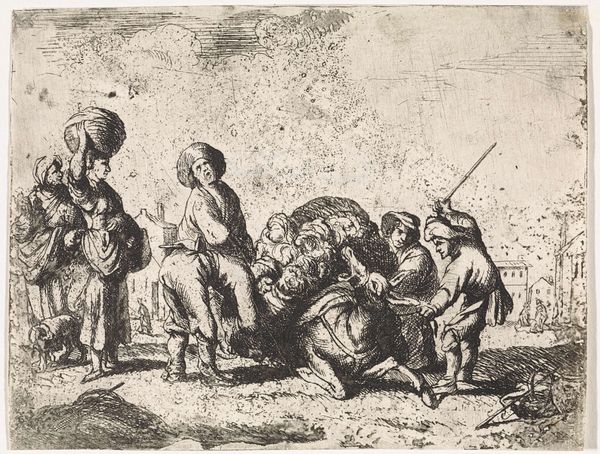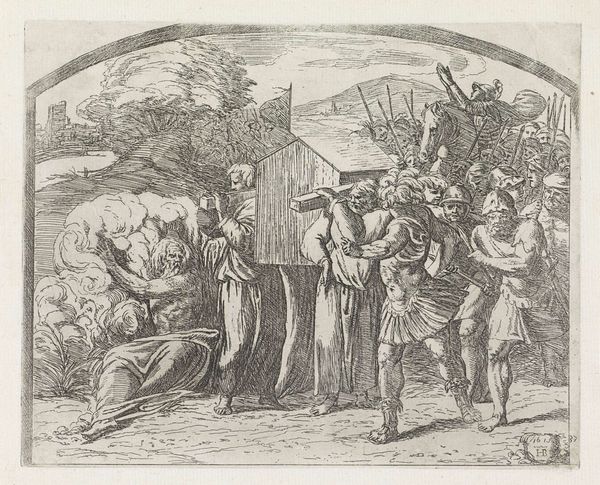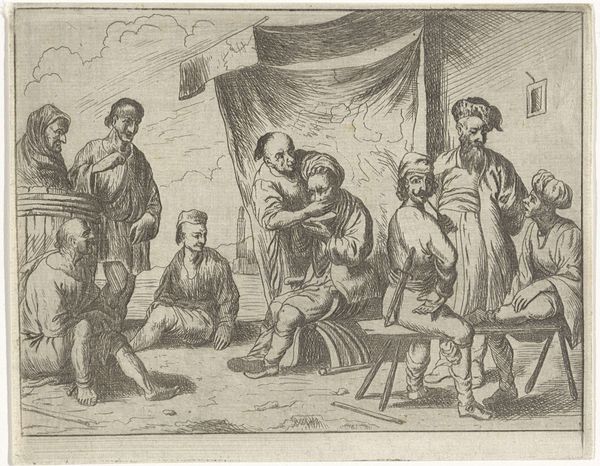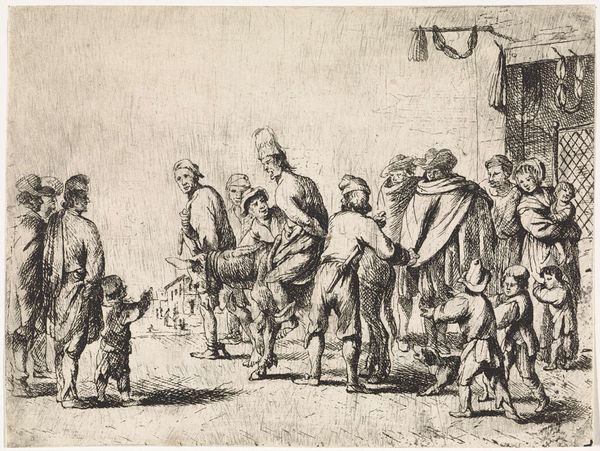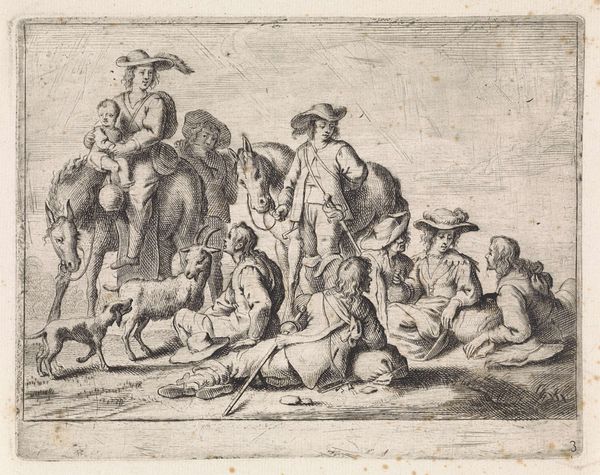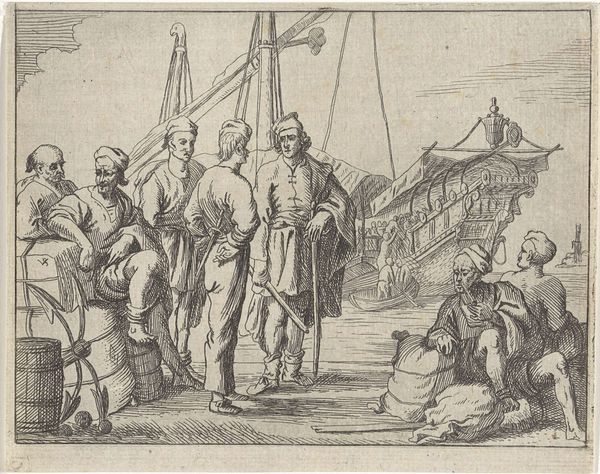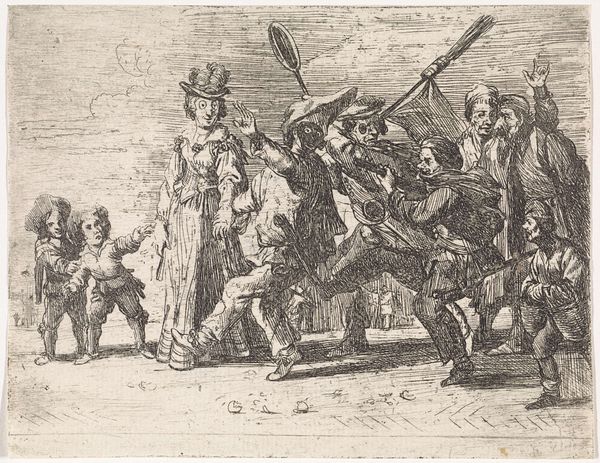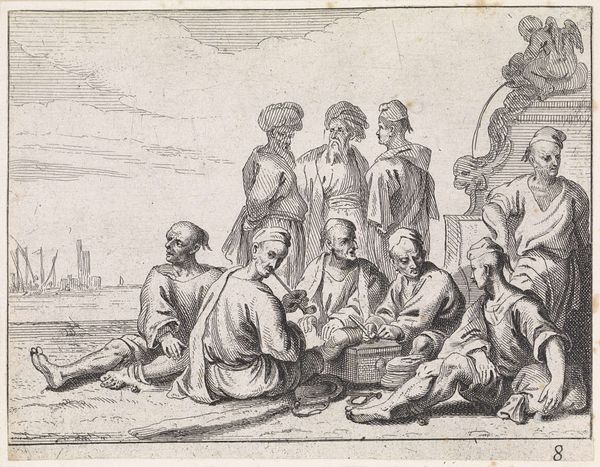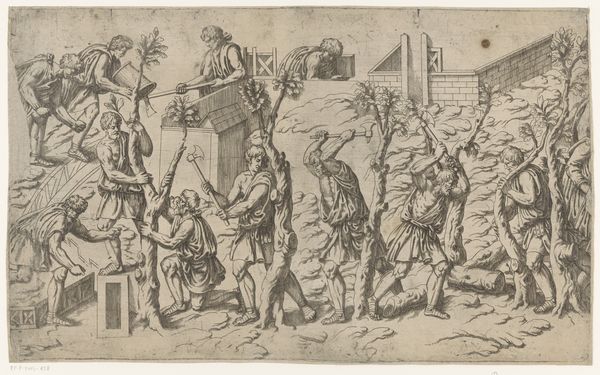
print, etching
#
narrative-art
#
baroque
# print
#
etching
#
figuration
#
genre-painting
Dimensions: height 117 mm, width 148 mm
Copyright: Rijks Museum: Open Domain
Curator: What strikes me immediately is the cross-hatching. Look at the density used to render shadows and texture in this piece. It seems hurried, energetic. Editor: That's right. We're looking at "Dronken gezelschap bij stadspoort", or "Drunken Company at a City Gate", an etching by Cornelis de Wael, created sometime between 1630 and 1648. And, indeed, it’s rich in detail for a print. What do you make of the subject matter? Curator: Well, beyond the obvious revelry, I see the echoes of morality tales common in that era. Consider the figure being carried – a clear symbol of the consequences of overindulgence, a warning perhaps? The open city gate might also signal moral laxity. Editor: Or, simply, the opportunity to sell and consume goods! Consider the economic activity swirling around city gates, markets set up right outside allowing to buy alcohol for celebrating some deals perhaps, the gate acts as a kind of transition zone from agricultural to a more centralized mercantile exchange, also evident in their attires. It’s quite material, isn't it? The physical vulnerability implied, perhaps in the worn-down tools that must have produced it… Curator: Interesting! But consider the cultural significance of the dog barking at the heels of the group. Traditionally, dogs can represent fidelity, but in this context, it feels more like a commentary on social order disrupted by this disorderly parade. Editor: And yet, that disorder, that transgression… It challenges established power. Consider the labor required for the printing, the materials needed – metal, ink, paper. The social exchange is important here, a means of disseminating social commentary, challenging the control of information through the printed image, reaching broad audiences. The apparent roughness itself could signal accessibility and immediacy. Curator: You bring a critical lens to it, certainly! I find myself returning to the interplay of light and shadow. Even in such a small piece, the drama created feels palpable. And while the cross-hatching might feel rushed, the artist clearly mastered his craft. Editor: Perhaps that “rush” was to better align his labor and means with its broader social reception? The very materials shout of this. Food for thought! Curator: Indeed! Thanks to both material conditions and the artist's conscious choices, an enduring image persists. Editor: Precisely, an image speaking to multiple truths on labour as well as symbolism across generations!
Comments
No comments
Be the first to comment and join the conversation on the ultimate creative platform.
